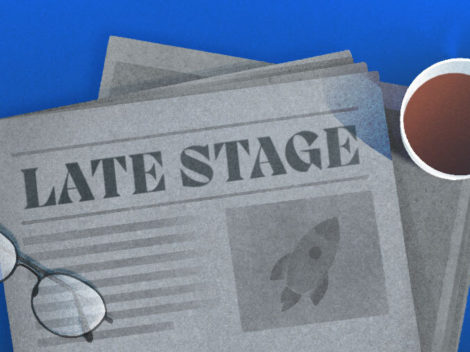Tumblr, once the home to creatives and bloggers, was sold to WordPress’s parent company, Automattic, yesterday. Axios first reported that the deal was between $10 million to $20 million, a huge dip from when it was initially scooped up by Yahoo in 2013 for $1.1 billion.
Subscribe to the Crunchbase Daily
Then Yahoo was acquired by Verizon, and Tumblr came along with it—changing ownership once again.
Matt Mullenweg, founder of Automattic, posted on Tumblr yesterday on the purchase: “When the possibility to join forces became concrete, it felt like a once-in-a-generation opportunity to have two beloved platforms work alongside each other to build a better, more open, more inclusive – and, frankly, more fun web. I knew we had to do it.”
He added that he is “absolutely committed to is to preserve the passion and sense of community that so many people around the world – and all over the web – have come to associate with Tumblr.”
We’ll get more into how past transfers impacted Tumblr’s trajectory later to help give some context for this new buy, but first let’s look into the social media platform’s funding history.
Prior to being passed around, Tumblr raised $125.3 million dollars in venture capital. In 2007, the year it was founded, it raised $750,000 by Spark Capital and Union Square Ventures. The two subsequent rounds were also led by both the aforementioned investors: a $4.5 million Series B and a $5 million Series C.
Sequoia Capital bet on the company in 2010 and led a $30 million Series D, with participation from Spark Capital and Union Square Ventures. At the time of this financing event, TechCrunch reported that Tumblr only had 12 employees. As per yesterday’s deal, Automattic will acquire about 200 employees from Tumblr.
And about two years before Verizon bought Tumblr, the platform raised $85 million led by Insight Partners, after tripling its audience and hosting 30 million blogs.
So what changed?
It’s A Hot Potato
In 2010, David Karp told TechCrunch that he wanted Tumblr to be the “best place in the world for creative communities,” calling out Facebook for being “arguably hostile” toward these groups. Karp was an outspoken critic of censorship and champion of net neutrality in the media community. That changed as the platform was passed between many owners and executives left.
In 2017, Taylor Lorenz, then of The Daily Beast, reported how Tumblr’s changing ownership impacted Karp’s once strenuous handle over the platform’s freedom to post. Below, Lorenz details Verizon’s efforts to “dismantle the open web.”
The company spends millions in lobbying efforts and, in 2011, it sued the FCC to overturn net-neutrality rules. In April of this year, its current general counsel, Kathy Grillo, wrote an open letter voicing Verizon’s support in repealing the protections.
Verizon owning Tumblr, thus, wasn’t the best look for a platform that wanted to be the “Best place in the world for creative communities.”
Those woes intensified into action when Tumblr banned explicit content on December 17, 2018. The move was deemed controversial by some in the blogger community, as creative users had their content hidden (more here, if you’re interested).
Tumblr felt the reaction in traffic. From the latest count by Statista, the company had 376 million unique visitors globally. In January 2019, Tumblr had 437 million users. The chart below, from Statista, shows the global online and mobile users of the platform over time.

It even inspired some users, like June, who prefers to go by her first name, to move to other platforms that felt less censored.
June, who has used Tumblr since 2011 and draws lovers, cuddling or kissing, felt impacted by the porn ban. Her drawings and sketches have been deleted, although Tumblr claims it does not delete work, just hides it from the public.
“I know the algorithm was used at first to ban the porn bots on the website but the thing is that it sucked. Really bad at first. They’ve corrected a little the algorithm cause it used to ban EVERYTHING on the platform (including totally safe drawings or pictures),” she told Crunchbase News.
She explained how Tumblr has since gotten “deserted.”
“My dashboard used to be liveful and I have to scroll on it every day to see all the news, but now I could go once a week on it and still be up to date.”
It’s inspired her to move to Twitter, as her blog post below shows.

Currently, June has over 1,200 followers on Twitter. Unless Automattic changes the ban, she doesn’t think her opinion of Tumblr will change.
Illustration: Li-Anne Dias.

Stay up to date with recent funding rounds, acquisitions, and more with the Crunchbase Daily.








![Illustration of stopwatch - AI [Dom Guzman]](https://news.crunchbase.com/wp-content/uploads/Halftime-AI-1-300x168.jpg)


67.1K Followers